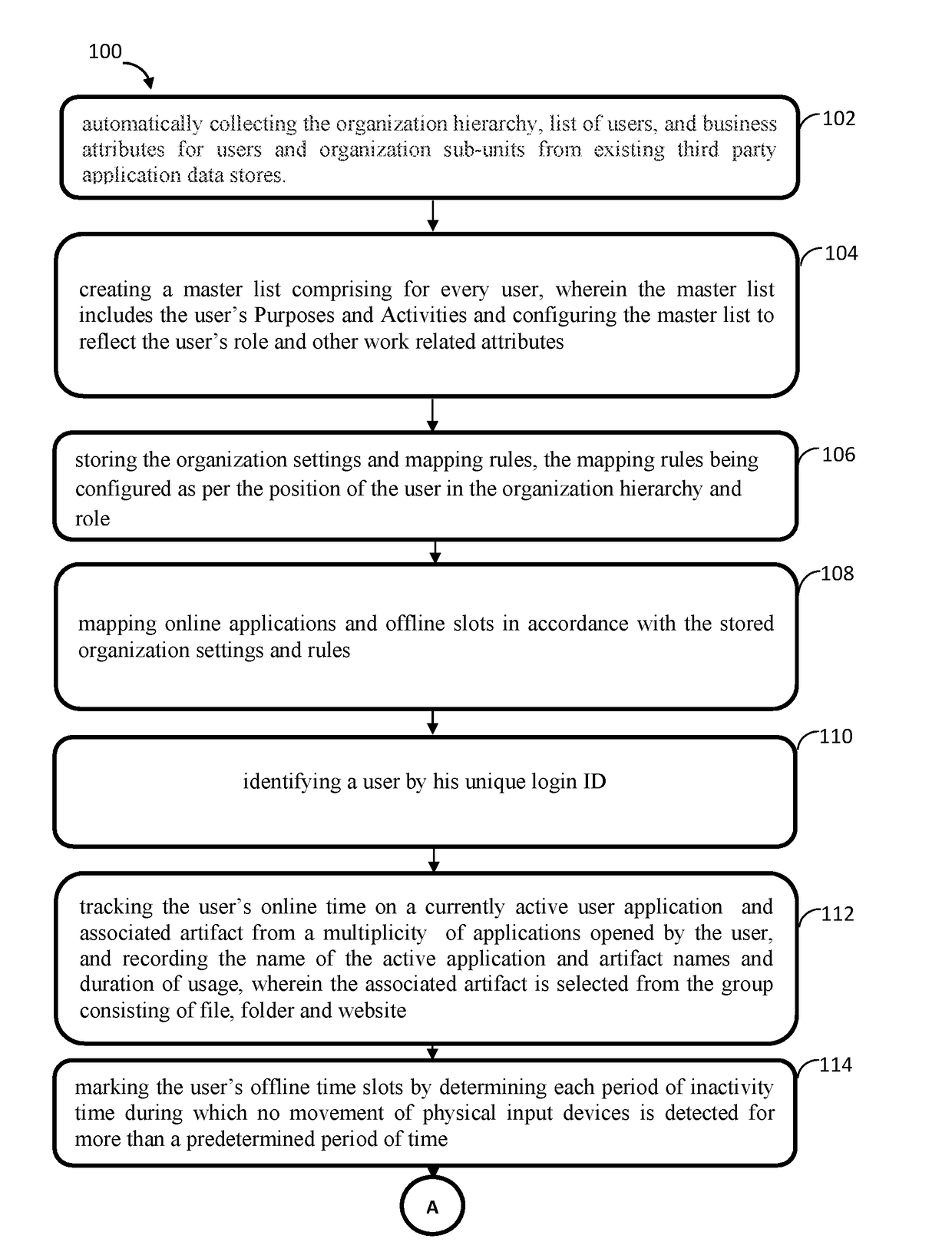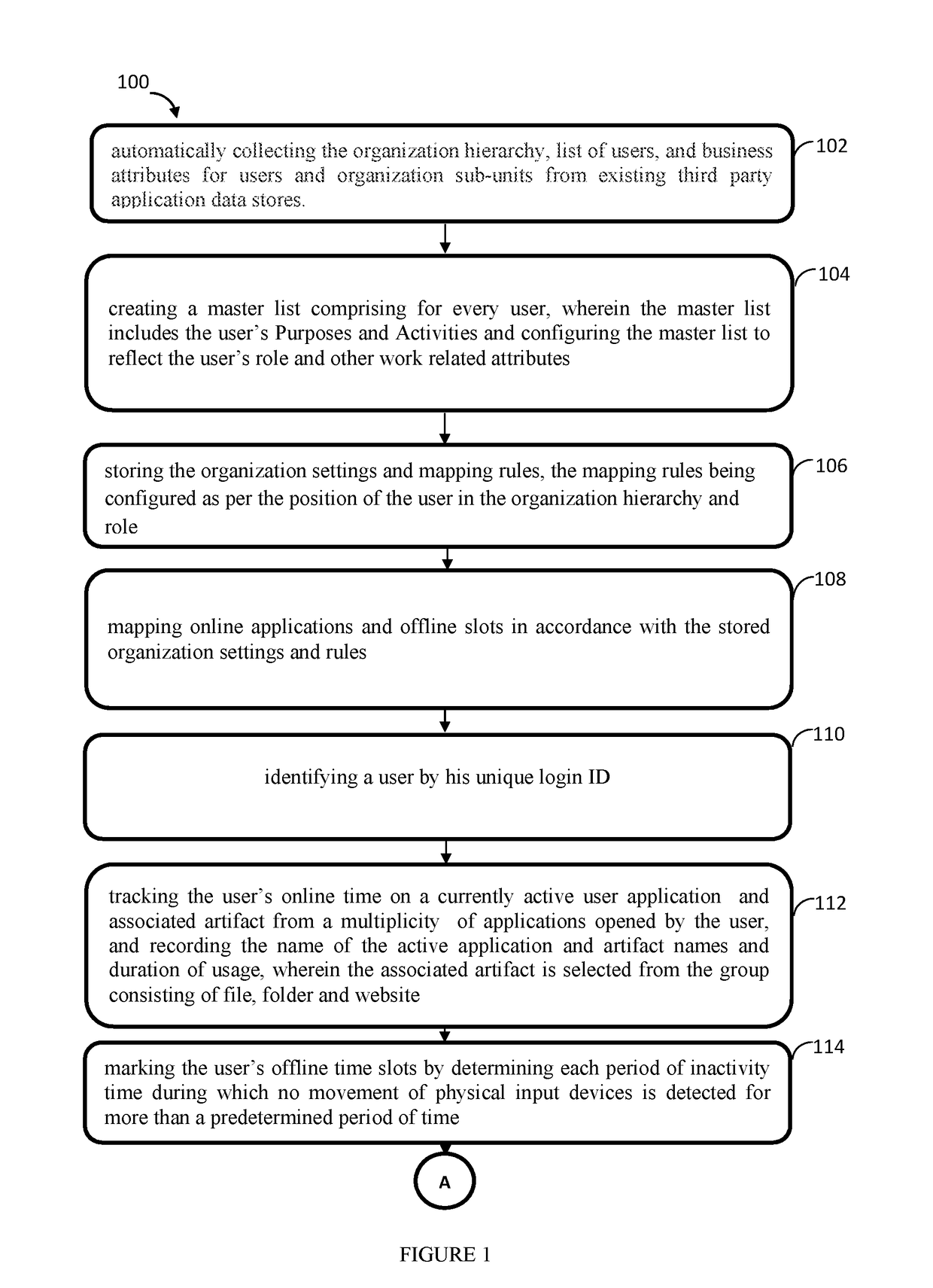However, it is very difficult to pin-point exact work effort at companies where employees fall into one or both of these categories: a) working mostly on computers to deliver products and services, and b) regularly travelling within and outside the office for sales, support and marketing.
Besides
office workers, organizations have marketing and sales staff who are on the phone and travel extensively for business, and whose
work time is equally difficult to track.
Hence, in most white collar jobs, whether
desk bound or sales oriented, it is not possible to measure the exact time on actual work put in by employees.
An even bigger challenge is accounting for an employee's
work time breakup across various Activities and end objectives (Purposes).
It is even more difficult to measure the work effort of sales and marketing staff who spend much of the work day on business calls, travel to customer locations, and discussions with clients.
Most managers do not want to micro-manage and track each user's daily work effort.
Even when deliverables are on time and up to the required quality, it is difficult to assess whether there is room for effort improvement, which can lead to better financial results.
However, supervisors of a white collar workforce are constrained because of lack of any factual data about time and nature of the actual work being done on computers, at phone, phones and when traveling.
Supervisory inputs about
work time are transactional and subjective, and senior management has no factual data about exact
workload in projects and business units.
Hence, staff allocation is based exclusively on budgets and priorities, and hence not very optimal.
Today's economy and competitive landscape demand exact continuing productivity improvements, which are not possible without automated effort
visibility.
Since white collar employees do so many different things in office, both on their CS and away from them, they have no way of precisely tracking their
total work time, let alone the
breakup on different Activities and Purposes.
Hence, while lot of data is provided, it is inaccurate and misleading.
Consequently, timesheets usually end up being an exercise for billing purposes, and not with a view to measure and improve work effort and productivity.
However, they are limited in coverage and suggest improvements in narrow areas, such as a
business process or work profile, which need to be configured.
They do not teach how the activities and objectives of a user can be inferred based on the applications and artifacts being used, the source of offline time usage, and the role and position of the user in the organization.
They do not adequately assure the employee of privacy by providing a local
user interface on the employee's CS that enables the user to identify and block details of personal time.
Further, they do not teach how the effort of individual users can be aggregated as per the organization hierarchy and business attributes (such as roles, skills, locations, verticals, cost and profit centers), that are automatically retrieved from the organization's existing application data stores, and further analysed to obtain objective per-employee
metrics that allow
performance comparison across any two or more organization sub-units, whether employee, team, project, business unit or the entire organization.
However, US20060184410 does not teach a comprehensive capture of the user's time in
online and offline activities, and automatically mapping the same to ‘Activities’ and ‘Purposes’ that are generic and independent of a specific
business process.
For example, it does not disclose the automatic derivation of Purposes (projects or functions) assigned to the user based on his or her position in the organization hierarchy.
Moreover, the system described by Ramamurthy does not disclose mapping of the user's time to ‘Activity’ and ‘Purpose’ directly on the basis of online applications and artifacts being used, and the nature of offline activity, and also taking into account the user's position and role.
Ramamurthy et al does not provide methods and systems to protect employee privacy since the effort being captured is for a limited purpose of
business process optimization, rather than all the effort in the office and outside.
Ramamurthy et al. does not disclose aggregation and rollup of user data as per the organization hierarchy and attributes, as collected automatically from the organization's existing application data stores.
However, it does not teach detecting the user's complete offline time on phone calls, lab and conference rooms, travel, and remote visits, from various Presence Devices such as electronic phone logs,
swipe cards, smartphone with GPS, and so on.
Further, the system described by Callanan does not disclose mapping of the user's time to ‘Activity’ and ‘Purpose’ directly on the basis of online applications and artifacts being used, and the nature of offline activity, and also taking into account the user's position and role in the organization.
Further, Callanan does not teach aggregation and rollup of user data as per the organization hierarchy and attributes, as collected automatically from existing data stores in the organization.
Callanan et al also do not offer methods and systems for protecting employee privacy, including the capability to block some or all of the individual effort while still measuring and displaying aggregate effort.
However, Anderholm does not describe a 24×7 capture of user's time utilization, whether in office or at home or while traveling.
In particular, Anderholm does not disclose capture of any offline time by
interfacing to calendaring tools and presence devices.
Further, application artifacts such as files, folders, web links are not captured, and hence there is no automated mapping of user time to ‘Activity’ and ‘Purpose’ that requires inferences of a user's intentions based on applications and files, folders and links being used, how and where the offline time is spent, and the user's organization attributes such as role and position.
Anderholm discloses aggregation of users'
time based on organization hierarchy, but does not teach how the hierarchy and other business attributes can be obtained automatically from existing organization application data stores.
Further, Anderholm does not offer methods and systems for protecting employee privacy, including the capability to block some or all of the individual effort while still measuring and displaying aggregate effort.
Like Callanan, they are not able to provide
organization level analytics and
metrics that can drive comparison and optimization of effort in organization sub-units across the enterprise.
None of the existing solutions are able to account for work being done by the same user on multiple Purposes, or when they use a combination of
computing systems such as a PC, smartphone, tablet, or when a shared CS is accessed by multiple users through a common login, or if the user works on a remote CS that belongs to a different organization.
While a few tools track meetings scheduled through a calendar, they do not track offline time utilization on calls, lab work, travel, remote visits, by sourcing them from various Presence Devices (PDs) such as IP phones, EPABX, mobile phones, smartphones, GPS,
swipe cards, biometric devices, and cameras.
They do not specify automated collection of organization hierarchy and business attributes, without which the intelligent mapping of user time to Activities and Purposes is not possible.
They do not disclose the computation of any per-person Work Patterns and productivity
metrics that allow for objective comparison between one or more organization sub-units of any size, from one employee to the entire organization.
Hence, they do not provide online automated analysis of effort data across various business dimensions such as geography, verticals, employee
skill sets, and salaries and so on.
Apart from the ability to stop tracking of user's time either manually or outside of the business process being covered, none of the existing tools describe methods to protect individual privacy as per the requirements of each organization and to comply with privacy policies in different countries.
 Login to View More
Login to View More  Login to View More
Login to View More 


